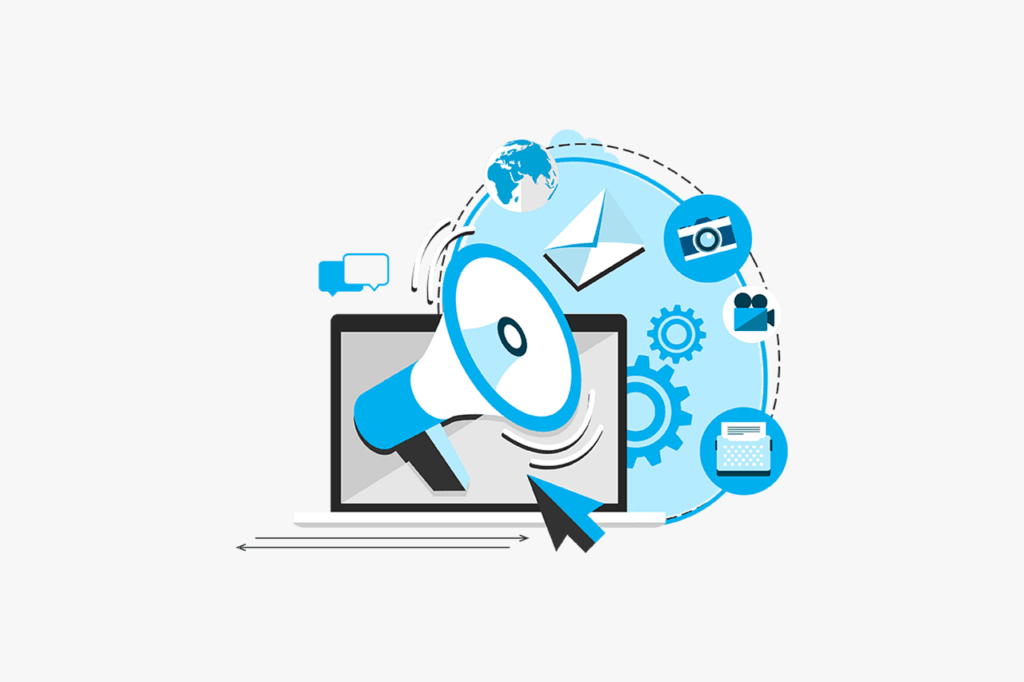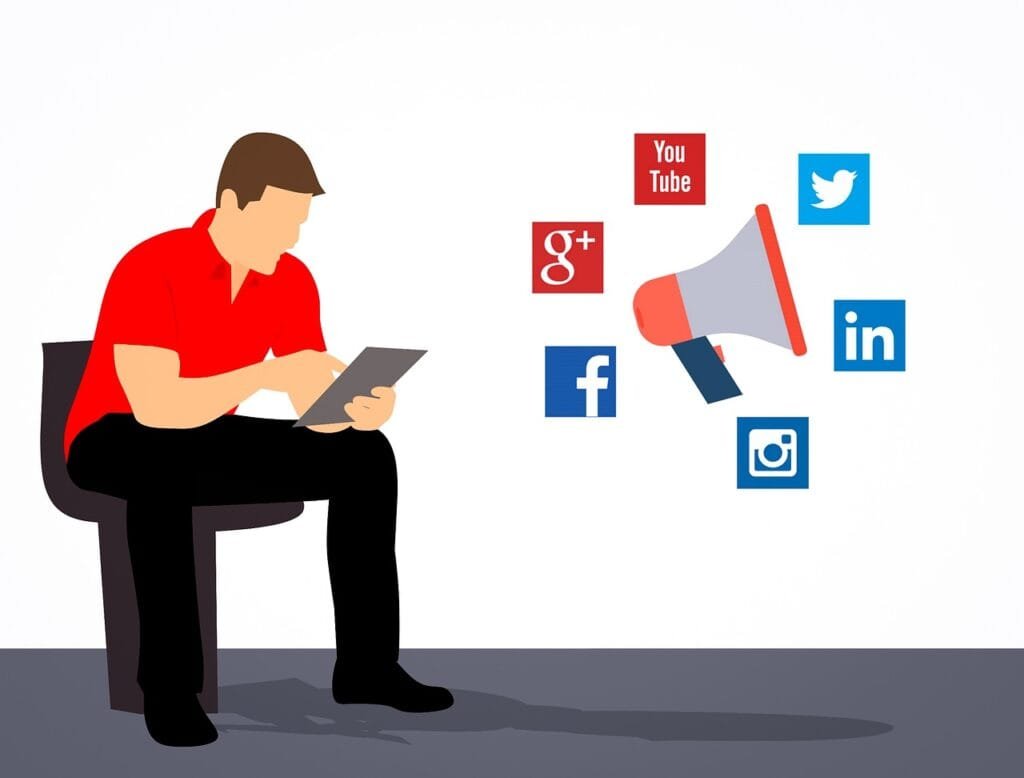This Article has been revised, edited and added to, by Poulomi Chakraborty.
- The Essence of Content Repurposing
- Practical Steps for Effective Content Repurposing
- Identifying Your Content Goldmine
- The Art of Repurposing for Different Platforms
- SEO Optimization Across Formats
- Establishing Authority Through Comprehensive Coverage
- Uncovering Hidden Gems in Your Content Library
- Tailoring Content for Audience Segments
- Leveraging Data for Strategic Repurposing
- Incorporating User-Generated Content
- Crafting a Content Repurposing Calendar
- Testing and Learning
- Advanced Tactics for Leveraging Repurposed Content
- Creating a Content Repurposing Plan
- Engaging with Your Community
- Monitoring and Iterating
- Creating Synergies Between Content Pieces
- Optimizing for Different Stages of the Buyer's Journey
- Utilizing Interactive Content to Foster Engagement
- Harnessing the Power of Microcontent
- Building a Community Around Your Content
- Continuous Optimization Based on Analytics
- Expanding Your Content's Reach Through Multi-Channel Distribution
- The Importance of a Multi-Channel Approach
- Tailoring Content for Each Channel
- Leveraging Social Media for Engagement and Sharing
- Monitoring, Analyzing, and Adjusting Your Strategy
- Crafting a Channel-Specific Messaging Strategy
- Leveraging SEO Across Channels
- The Role of Email in Multi-Channel Distribution
- Collaborating with Partners for Extended Reach
- Measuring Success Across Channels
- Creating a Feedback Loop with Your Audience
- Implementing Content Repurposing Strategies in Your Startup's Content Marketing
- Conclusion
Welcome to the insider’s guide on mastering the art of content repurposing to skyrocket your website’s on-page SEO and establish undeniable authority in your niche. This isn’t just about rehashing old content; it’s about transforming your goldmine of ideas into multiple, SEO-rich formats to capture a wider audience and enhance your site’s visibility. Let’s dive deep into this strategy that’s as much about smart marketing as it is about sustainable content creation.
The Essence of Content Repurposing

Imagine you’re at a buffet, and instead of one dish, you can taste everything. That’s content repurposing – taking a single piece of content and adapting it into various formats to serve different preferences and purposes. It’s a strategy that not only amplifies your message across platforms but also significantly boosts your SEO efforts without the need for additional resources or ideas. But how does this compare to traditional content creation? Let’s break it down.
Content Repurposing vs. Traditional Content Creation
At first glance, traditional content creation seems straightforward. You identify a topic, research it, and create a fresh piece of content. This method has its perks, especially in terms of originality and creativity. However, it demands a lot of time and resources – from brainstorming and research to writing and editing. It’s a linear process: each piece of content is created from scratch, used once, and then it’s on to the next.
Content repurposing, on the other hand, is like a multi-branch tree. You start with a robust trunk – your original content – and extend it into various branches: blog posts, infographics, videos, podcasts, social media snippets, and more. This approach maximizes the reach and lifespan of your original idea, making it more sustainable and efficient. But the benefits don’t stop there. From an SEO perspective, repurposing content can give your site a significant advantage.
When you repurpose content, you naturally embed a variety of keywords related to the original topic into different formats. Each format, tailored to its platform, attracts backlinks and engagement, signaling to search engines that your site is a valuable resource. This diversified approach not only strengthens your site’s keyword matrix but also caters to different user preferences, increasing the overall time spent on your site – a critical factor for SEO.
Moreover, repurposing content allows for deeper exploration of a topic across formats, establishing your authority. As you cover a topic from multiple angles, you not only offer value to your audience but also signal to search engines your expertise in the subject matter, further bolstering your site’s authority and ranking.
But how exactly do you repurpose content effectively for SEO and authority? It starts with understanding the types of content that lend themselves well to repurposing and then strategically planning how to transform them to serve your SEO goals. Whether it’s turning a detailed blog post into an engaging video tutorial or distilling the key points of an infographic into a series of tweets, each repurposed piece should be optimized for its platform while reinforcing the original message and keywords.
In summary, while traditional content creation focuses on producing new content from scratch, content repurposing leverages existing content to expand its reach and impact. This approach not only saves time and resources but also enhances your SEO efforts and establishes your site as an authoritative source in your niche. By smartly repurposing content, you’re not just recycling ideas; you’re strategically positioning your site for greater visibility and engagement.
Practical Steps for Effective Content Repurposing

Now that we’ve established the strategic comparison between content repurposing and traditional content creation, let’s move into the practical arena. How do you effectively repurpose content to boost your on-page SEO and assert your authority in your niche? This section will walk you through actionable steps, ensuring that each piece of repurposed content works hard to elevate your website’s performance.
Identifying Your Content Goldmine
The first step in your content repurposing journey is to identify which pieces of content are worth repurposing. Look for your ‘content goldmine’—those blog posts, articles, or any content piece that has performed exceptionally well in terms of engagement, traffic, or SEO rankings. These are your winners, the content that resonates with your audience and has the potential to do so again in different formats.
The Art of Repurposing for Different Platforms
Once you have identified your content goldmine, it’s time to adapt it for various platforms. This is where creativity meets strategy. Each platform has its unique audience and content preferences, and your repurposed content needs to match these.
From Blog Posts to Infographics and Videos
For example, a well-researched blog post can be transformed into an engaging infographic that highlights key statistics or findings. This visual format is not only shareable but also highly appealing for platforms like Pinterest or Instagram, attracting a different segment of your target audience.
Similarly, videos have become a cornerstone of digital consumption. Converting the core message of a blog post into a video tutorial or a webinar can significantly enhance your visibility on platforms like YouTube or even LinkedIn. Videos allow you to connect with your audience on a more personal level, demonstrating expertise and building trust.
Social Media Snippets and Podcast Episodes
Don’t overlook the power of social media snippets. These bite-sized pieces of content, whether quotes, tips, or questions, can drive traffic back to your original post and engage your audience in meaningful conversations across platforms like Twitter, Facebook, or LinkedIn.
For those who prefer auditory content, consider turning your blog posts into podcast episodes. This format is ideal for in-depth discussions, interviews, or simply narrating your content, providing value to your audience while they’re on the go.
SEO Optimization Across Formats
Repurposing content isn’t just about changing the format; it’s also about re-optimizing for SEO. Each piece of repurposed content should be optimized for the platform it’s intended for, incorporating relevant keywords, meta descriptions, and tags to enhance visibility.
Moreover, interlinking between the original content and its repurposed versions can create a network of backlinks, significantly boosting your SEO. For instance, include a link to your original blog post in your YouTube video’s description or reference it during your podcast episode. This not only helps with SEO but also drives traffic across your content ecosystem.
Establishing Authority Through Comprehensive Coverage
Finally, content repurposing allows you to cover a topic comprehensively, establishing your authority. By presenting the same topic through different lenses and formats, you cater to diverse learning styles and preferences, making your content accessible to a broader audience. This thorough coverage not only positions you as an expert in your niche but also enhances your website’s credibility and trustworthiness, further solidifying your authority.
Uncovering Hidden Gems in Your Content Library
The first step in effective content repurposing is to conduct a thorough audit of your existing content. This involves more than just identifying high-performing pieces; it’s about uncovering the hidden gems that have the potential to shine in a new format or on a different platform. Look for evergreen content, pieces with timeless advice, or articles that sparked engagement and discussions. These pieces hold intrinsic value that, when polished and presented afresh, can attract new audiences and re-engage existing ones.
Tailoring Content for Audience Segments
Understanding that your audience is not a monolith is crucial in repurposing content effectively. Different segments of your audience will engage with your content in various ways, depending on their preferences, challenges, and where they are in the customer journey. Segment your audience and tailor repurposed content to address their specific needs and interests. For example, a technical blog post can be transformed into a series of how-to videos for beginners or an in-depth webinar for advanced users. This targeted approach ensures that your content resonates with and is relevant to each segment, maximizing engagement and conversion opportunities.
Leveraging Data for Strategic Repurposing
Data should be at the heart of your content repurposing strategy. Use analytics to identify not just which pieces performed well but also why they resonated with your audience. Look at metrics like time on page, bounce rate, and conversion rate to gauge content effectiveness. Also, social media engagement metrics can offer insights into the types of content your audience prefers to share and discuss. This data-driven approach allows you to make informed decisions about which content to repurpose and how to optimize it for maximum impact.
Incorporating User-Generated Content
User-generated content (UGC) can be a goldmine for content repurposing. Reviews, testimonials, and user stories can provide authentic and compelling content that resonates with prospective customers. Consider repurposing UGC into case studies, highlight reels, or social media posts to showcase the real-world impact of your product or service. This not only enhances your content strategy but also builds trust and credibility with your audience.
Crafting a Content Repurposing Calendar
Consistency is key in content marketing, and this extends to your repurposing efforts. Develop a content repurposing calendar that aligns with your overall marketing strategy and key business milestones. This calendar should detail what content will be repurposed, in what format, for which audience segment, and when it will be published. A well-planned content calendar ensures that your repurposing efforts are strategic, timely, and aligned with your brand’s goals, maximizing the return on your content investment.
Testing and Learning
Finally, approach content repurposing with a mindset of continuous improvement. Test different formats and channels to see what works best for your audience and goals. Use A/B testing for repurposed content to refine your approach based on real-world data. This iterative process of testing, learning, and optimizing will help you fine-tune your content repurposing strategy, ensuring that your efforts consistently drive engagement, generate leads, and build authority in your niche.
By embracing these practical steps and integrating them into your content marketing strategy, startup founders can unlock the full potential of their existing content, reaching new audiences and deepening engagement with existing ones. Remember, the goal of content repurposing is not just to extend the life of your content but to strategically leverage it for growth, engagement, and conversion.
Advanced Tactics for Leveraging Repurposed Content

Delving deeper into the content repurposing strategy, let’s explore advanced tactics that can further amplify your SEO outcomes and cement your position as an authority in your field. These techniques will help you not only extend the reach of your content but also maximize its impact across different digital landscapes.
Creating a Content Repurposing Plan
An essential step that often goes overlooked is the creation of a content repurposing plan. This plan should detail what content will be repurposed, into which formats, for what platforms, and when. By having a strategic plan in place, you ensure that content repurposing becomes an integral part of your content marketing strategy, rather than an afterthought.
Keyword Integration Across Platforms
In your plan, emphasize keyword integration. While repurposing content, revisit your keyword research to identify any new or related keywords that have emerged. Integrating these keywords across your repurposed content not only boosts SEO but also ensures that your content remains relevant and visible in search engine results.
Utilizing Content Clusters for Authority
Build content clusters around your main topics. Start with a pillar piece of content, such as an in-depth blog post or a comprehensive guide, and repurpose it into smaller, related pieces that link back to it. This creates a content ecosystem that not only improves user experience by providing related information in various formats but also signals to search engines the depth of coverage you have on a topic, thereby boosting your authority.
Engaging with Your Community
Engagement doesn’t end with publishing your repurposed content. Actively engaging with your audience across platforms can provide insights into what content resonates most, informing future repurposing efforts. Additionally, engagement such as comments, shares, and likes improves social signals, which, although not a direct ranking factor, can indirectly influence your SEO by increasing visibility and traffic.
Cross-Promotion for Compound Impact
Do not underestimate the power of cross-promotion. When you repurpose content, promote it across all your channels, even if it’s not native to them. For instance, share your infographic on LinkedIn with a link to the full video on YouTube. This not only increases your content’s exposure but also drives traffic across your digital properties, enhancing SEO through improved engagement and reduced bounce rates.
Monitoring and Iterating
An often overlooked aspect of content repurposing is monitoring its performance. Use analytics to track how each repurposed piece performs in terms of engagement, traffic, and conversions. This data is invaluable for refining your content repurposing strategy over time, allowing you to focus on formats and platforms that deliver the best results.
SEO Tools for Enhanced Analysis
Leverage SEO tools to analyze the impact of your repurposed content on your website’s ranking and visibility. Tools like Google Analytics, SEMrush, or Ahrefs can provide insights into how your content performs, which keywords are driving traffic, and how your site’s authority is growing. Use this information to tweak your strategy, focusing on what works best for your audience and your SEO goals.
Creating Synergies Between Content Pieces
The effectiveness of repurposed content is magnified when there’s a clear, strategic connection between the original piece and its repurposed siblings. Start by mapping out a content ecosystem where each repurposed item interlinks, supporting and amplifying the others. For instance, a detailed research report can be broken down into a series of blog posts, each diving deep into a specific aspect of the report. These posts can then link back to the full report, driving traffic while also offering readers a pathway to explore the topic further. This strategy not only boosts SEO through internal linking but also enhances the user’s journey, encouraging deeper engagement with your content.
Optimizing for Different Stages of the Buyer’s Journey
Understanding the buyer’s journey is crucial in tailoring your repurposed content to meet the audience’s needs at each stage. Create content variations that cater to the awareness, consideration, and decision stages. For example, repurpose an in-depth guide (consideration stage) into a series of introductory blog posts (awareness stage) or into a comparison checklist (decision stage). By addressing the specific questions and concerns at each stage, your content becomes more relevant and valuable, guiding potential customers through the journey toward conversion.
Utilizing Interactive Content to Foster Engagement
Elevate your repurposed content by incorporating interactive elements that engage your audience actively. Tools that allow for the creation of quizzes, surveys, interactive infographics, and calculators can transform static content into dynamic experiences. This not only increases engagement rates but also provides valuable data about your audience’s preferences and behaviors. Interactive content can serve as a powerful tool for lead generation, with personalized results or reports in exchange for contact information.
Harnessing the Power of Microcontent
In a world where attention spans are short, microcontent can capture and retain your audience’s attention. Repurpose long-form content into bite-sized, easily digestible pieces such as infographics, quotes, or short videos. These pieces are not only perfect for social media but also encourage sharing, increasing your content’s visibility and reach. Microcontent can act as a teaser, drawing the audience in to explore the full piece, effectively driving traffic to your site.
Building a Community Around Your Content
Engage your audience by building a community around your content. Utilize platforms like Reddit, LinkedIn Groups, or even a dedicated section on your website to foster discussions and interactions. Encourage users to share their experiences, insights, and questions related to your content topics. This not only amplifies your content’s reach but also builds loyalty and trust with your audience, positioning your brand as a thought leader in the industry.
Continuous Optimization Based on Analytics
Beyond the creation and distribution of repurposed content, continuous optimization is key. Utilize analytics to monitor performance across different formats and channels, identifying what resonates best with your audience. This data-driven approach allows you to refine your content strategy over time, focusing on the most effective types of repurposed content and distribution channels. Regularly updating your repurposed content based on current trends, data, and feedback ensures it remains relevant and engaging.
By implementing these advanced tactics, startup founders can not only maximize the efficiency of their content marketing efforts but also create a more dynamic, engaging, and strategically cohesive content ecosystem. This approach not only extends the lifespan of your content but also deepens its impact, driving growth, engagement, and establishing your brand’s authority in your niche.

Related: Check out our free SEO suite

Expanding Your Content’s Reach Through Multi-Channel Distribution
After mastering the art of content repurposing and implementing advanced tactics, it’s crucial to understand the power of multi-channel distribution to further amplify your content’s reach and SEO impact. This section will guide you through the process of distributing your repurposed content across various channels to ensure maximum visibility and engagement.
The Importance of a Multi-Channel Approach
In today’s fragmented digital landscape, your audience is scattered across various platforms, each with its unique preferences and content consumption habits. A multi-channel distribution approach allows you to meet your audience where they are, increasing the chances of your content being seen and engaged with.
Identifying the Right Channels
Start by identifying which platforms your target audience frequents. While social media platforms like Facebook, Instagram, and LinkedIn are common choices, don’t overlook niche forums, email newsletters, and other digital communities where your audience might gather. Each platform offers unique opportunities to engage with your audience and drive traffic back to your website.
Tailoring Content for Each Channel
Simply posting the same piece of content across all platforms isn’t enough. Tailor each piece of repurposed content to fit the format and norms of the platform you’re targeting. This might mean creating shorter, more engaging posts for Twitter, longer, informative pieces for LinkedIn, or visually appealing snippets for Instagram. Remember, the goal is to adapt your content to match the user experience of each platform while maintaining a cohesive brand message.
SEO Benefits of a Multi-Channel Strategy
Distributing your content across multiple channels not only increases its visibility but also creates numerous backlinks to your site, enhancing your SEO. Each platform provides a unique avenue for potential customers to find your content, increasing organic traffic and improving your site’s search engine ranking.
Leveraging Social Media for Engagement and Sharing

Social media platforms are powerful tools for amplifying the reach of your repurposed content. Encourage sharing by creating engaging, share-worthy content that resonates with your audience. Utilize hashtags, engage in conversations, and participate in community discussions to increase your content’s visibility and drive engagement.
Collaborating with Influencers and Industry Leaders
Collaborating with influencers and industry leaders can significantly amplify your content’s reach. By leveraging their networks, you can introduce your content to a broader audience, increasing visibility and authority. Whether it’s through guest blogging, podcast interviews, or social media shoutouts, collaborations can be a powerful tool in your content distribution strategy.
Monitoring, Analyzing, and Adjusting Your Strategy
As with any digital marketing effort, it’s crucial to monitor the performance of your multi-channel distribution strategy. Analyze which channels drive the most traffic, engagement, and conversions, and adjust your strategy accordingly. Pay attention to metrics like click-through rates, engagement rates, and social shares to understand what content resonates best with your audience.
Using Analytics to Inform Future Content
Use the insights gathered from your analytics to inform your future content creation and repurposing efforts. Understanding what content performs best on which channels can help you tailor your strategy to maximize engagement and SEO impact.
Crafting a Channel-Specific Messaging Strategy
While repurposing content across multiple channels, it’s critical to tailor your messaging to fit the unique audience and format of each platform. A one-size-fits-all approach can lead to suboptimal engagement and missed opportunities. Start by identifying the core message of your content, then adapt it to resonate with the users of each channel. For instance, the professional tone and detailed analysis that works on LinkedIn may need a more casual, concise makeover for Twitter or Instagram. This strategic adaptation ensures your content feels native to each platform, increasing its appeal and effectiveness.
Leveraging SEO Across Channels
SEO isn’t confined to your website. Each social media post, YouTube video description, and even podcast transcript can be optimized to increase visibility on search engines and within the platforms themselves.
Conduct keyword research specific to each platform to understand what your target audience is searching for. Incorporating these keywords into your repurposed content can dramatically improve discoverability, driving organic traffic from a variety of sources.
The Role of Email in Multi-Channel Distribution
Email remains one of the most direct and effective channels for content distribution. It allows for personalized communication with your audience, delivering your repurposed content straight to their inbox. Segment your email list based on user behavior and preferences to tailor the content you send, increasing relevance and engagement.
Additionally, consider creating email-exclusive content that complements your repurposed pieces, adding value and encouraging subscribers to stay engaged across your other distribution channels.
Collaborating with Partners for Extended Reach
Partnerships can play a pivotal role in amplifying your content’s reach. Collaborate with non-competing businesses, influencers, and industry experts to share and promote each other’s content. This not only extends your reach to new audiences but also adds credibility to your brand. Choose partners whose audience aligns with your target market and whose content complements your own for maximum impact.
Measuring Success Across Channels
To truly understand the impact of your multi-channel distribution strategy, it’s essential to measure and analyze performance across all channels. Utilize platform-specific analytics tools to track engagement metrics such as views, shares, likes, and comments, as well as website analytics to monitor traffic sources and conversion rates. This data will provide valuable insights into which channels and types of content are most effective, allowing you to refine your strategy for even greater success.
Creating a Feedback Loop with Your Audience
Engage with your audience across channels to gather feedback on your content. Use comments, polls, and direct messages to understand what your audience likes and what they want to see more of. This feedback loop is invaluable for tailoring your content and distribution strategy to meet your audience’s needs and preferences, fostering a deeper connection and driving loyalty.
By embracing these strategies for multi-channel distribution, startup founders can ensure their repurposed content not only reaches a wider audience but also engages and converts. Tailoring your approach to each channel, leveraging SEO, utilizing email marketing, forming strategic partnerships, measuring success, and creating a feedback loop with your audience are all critical steps in maximizing the impact of your content marketing efforts.
This holistic approach to multi-channel distribution empowers startups to navigate the digital landscape confidently, driving growth and establishing a strong brand presence.
Implementing Content Repurposing Strategies in Your Startup’s Content Marketing

For startup founders looking to maximize their content marketing efforts with limited resources, content repurposing is not just a strategy; it’s a necessity. Implementing these strategies effectively can help you extend your content’s reach, improve SEO, and establish authority in your niche without overextending your budget or team. Here, we provide strategic and actionable advice tailored to help startups make the most of content repurposing.
Start with a Content Audit
Before diving into content repurposing, conduct a comprehensive content audit of your existing material. Identify what content has performed well, what hasn’t, and why. This process will help you understand what resonates with your audience and reveal opportunities for repurposing high-performing content into new formats. Use tools like Google Analytics and social media analytics to gauge performance metrics.
Develop a Content Repurposing Workflow
- Identify Repurposing Opportunities: Based on your audit, pinpoint content that offers repurposing potential. Look for evergreen topics, high-traffic posts, and content that can be updated or expanded.
- Choose Formats Based on Goals: Decide on repurposing formats that align with your goals. If your aim is to boost engagement, consider interactive content. To enhance SEO, focus on formats that lend themselves to keyword optimization and backlinks, such as infographics or guest posts on relevant blogs.
- Assign Repurposing Tasks: Make content repurposing a part of your regular content strategy by assigning specific repurposing tasks to your team. If you’re a solo founder or part of a small team, prioritize tasks based on impact and feasibility.
Leverage Tools for Efficiency
Use tools to streamline the repurposing process. Content management systems (CMS) can help organize and schedule repurposed content. Design tools like Canva or Adobe Spark can simplify the creation of visual content, while platforms like Anchor.fm make podcast production accessible to beginners.
Focus on SEO from the Start
For each piece of repurposed content, conduct keyword research to identify relevant, high-traffic keywords. Incorporate these keywords strategically in titles, descriptions, and throughout the content. Remember, SEO is not just about search engines; it’s about making your content easily discoverable by your target audience.
Promote Across Channels
Don’t let your repurposed content sit idle. Promote it across all relevant channels, including social media, email newsletters, and industry forums. Tailor your promotional messages to each platform to maximize engagement. Use scheduling tools to ensure consistent and timely promotion.
Engage and Monitor
Engage with your audience as they interact with your repurposed content. Respond to comments, encourage sharing, and ask for feedback. Monitor the performance of your repurposed content using analytics tools, and use these insights to refine your strategy over time.
Implementing Actionable Advice for Startups
- Quarterly Content Reviews: Regularly review your content performance and strategy. Identify what’s working and what’s not, and adjust your repurposing strategy accordingly.
- Community Engagement: Actively participate in communities where your target audience hangs out. This can provide insights into content preferences and trends, informing your repurposing efforts.
- Collaborate for Content Amplification: Partner with other startups, influencers, or industry leaders to amplify your content’s reach. This could mean co-creating content or simply sharing each other’s repurposed content.
- Repurpose Content for Lead Generation: Use repurposed content as a tool for lead generation. Convert high-performing blog posts into downloadable guides or whitepapers in exchange for email sign-ups.
- Iterate Based on Feedback: Treat your content marketing as an iterative process. Use audience feedback to continually refine and improve your repurposing strategy.
By strategically implementing these content repurposing strategies, startup founders can effectively maximize their content marketing efforts, ensuring that every piece of content serves multiple purposes and reaches its full potential. Remember, content repurposing is not just about saving time or resources; it’s about amplifying your message and engaging your audience on a deeper level.
Conclusion
In the dynamic landscape of digital marketing, content repurposing emerges as a beacon for startups striving to amplify their voice, extend their reach, and cement their authority without stretching their resources too thin. By embracing a strategic approach to content repurposing, startups can transform their existing content into a versatile arsenal, ready to engage audiences across various platforms and formats. This guide has walked you through the why and how of content repurposing, from conducting a thorough content audit to leveraging tools for efficiency and engaging with your community.
The key lies in understanding your audience, being creative in your repurposing efforts, and remaining adaptable to feedback and analytics. As you implement these strategies, remember that content repurposing is not just about reaching more eyes; it’s about building connections, establishing trust, and driving value for your audience. With persistence and strategy, your startup’s content marketing can become a powerful engine for growth, engagement, and authority in your niche.
Read Next:
- How HARO can help you build links and gain PR exposure
- How to use Personalization in Your Automated Marketing Campaign
- How to choose the right revenue model for your business






















Comments are closed.